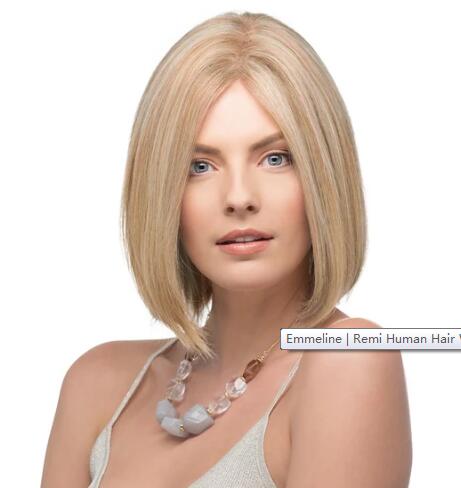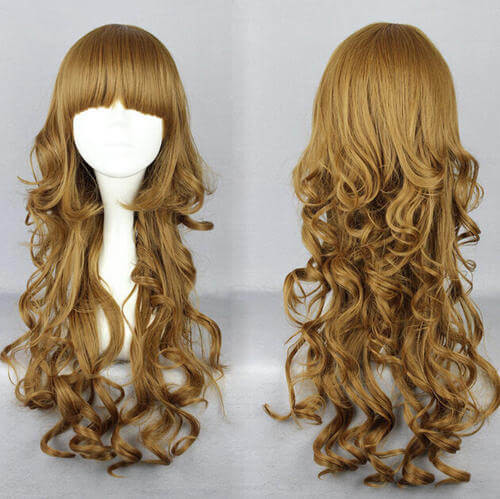Composition of A Hair Strand
The three most important parts of a human hair strand are the medulla, cortex, and cuticle. Understanding these elements will help you better visualize the human hair strand. The innermost layer of the hair shaft is the Medulla. A medulla’s shaft is nearly invisible and considered very fragile. You could possibly see it with a high powered microscope. A hair’s cortex is the thickest hair layer which also contains the pigment to give the hair color. The outermost layer of a human hair strand is known as the cuticle. Cuticles are made of hard shingle-like cells that provide protection to the inner layers of the hair. These cells actually give the hair strand strength and protection.
What’s Remy hair?
In the hair industry, Remy hair is considered as the top tier of all human hair and of course it’s more expensive. So what does Remy hair mean and why is it so sought-after, let’s find out the answer together. The term “REMY” refers to the characteristics of the hair and the method used to manufacture the hair extensions.
“Remy” or “Full Cuticle Hair” means that the hair has all cuticles healthy, intact and all cuticles flow in the same direction from root to the tip. Typically hair is of “Remy” quality when it has been collected directly from a woman’s head and has been but while held in a ponytail, so none of the hair strands fall to the floor. Because of the careful collection process, only “Remy” quality hair can guarantee that all cuticles will stay aligned and the hair will be tangle-free hair in its most natural form. True “Remy” hair lasts for a long time, can be reused several times, and can be colored or flat ironed with heat just like one’s own natural hair. Remy hair is only lightly processed. Remy human hair extensions should last up to 3 to 6 months with regular maintenance. Because of the collection method, Remy hair is in short supply and is therefore quite expensive.

What’s Non-Remy hair?
Unlike Remy hair usually collected from temples and places where people voluntarily donate their hair, non-Remy hair is collected from the floor of temples, salons and door-to-door brush hair collection. Due to these types of collection methods, cuticle directions are always mixed up and it cannot guarantee the cuticle was running in the same direction, which causes the hair to tangle and matte quite easily. It is in greater supply and easy to collect. Therefore non-Remy hair is much cheaper than Remy Hair.
The majority of human hair sold today is non-Remy hair. Because of the method of collection, the cuticle for each hair strand tends to be in all different directions. In order to compensate for this, the hair will go through a process sometimes referred to as an “acid bath”, to completely remove the entire cuticle. After the cuticle removal process, the hair is dipped in silicone to make it shine and to cover up any cuticles that were not removed in the acid bath. The silicone adds weight to the hair and ups the selling price as hair is sold by weight.
Fake Remy Hair
Do all companies that call their hair “Remy” actually sell Remy hair? Absolutely not.
As we mentioned before, to minimize tangling problems, many vendors treat the hair with special chemicals to strip off the cuticles completely and then apply layers of silicone coating over it to bring back the sheen. Unfortunately, after such treatment the hair initially looks and feels good and it is difficult for consumers to detect if it is Non-Remy hair just by touching or feeling it. There are several distinguished characteristics of non-Remy hair which labeled as Remy.
1.Cheaper price: Because non-Remy is so difficult to detect, many vendors unscrupulously labels this hair as “Remy hair” and attracts customer through aggressive pricing using ploys such as “factory direct”, “wholesale”, “deep discount” etc. Such “Non-Remy hair” (often labeled as “Remy”) is available at a significantly cheaper price point than real “Remy” hair.
2.Matte and tangling: Non-Remy hair may initially appear soft and silky, but after a few washes, the hair will become extremely tangled, dry, and will not hold a style. The hair seems high-quality because factories will coat the hair with silicone, making the hair feel soft and appear silky and shiny. The silicone is not permanent and washes off when you shampoo it and wears away against your clothing. After the silicone coating wears off, the hair feels very rough.
3.Cannot be dyed or heated: To strip off the cuticles, hair suppliers may soak the hair in acid or coat the hair with silicon. After all the processing, the hair is too damaged and weak to handle any further styling such as application of heat and color that the customer might desire to do at the salon. It does not last beyond a few washes and cannot be reused at all. The hair might last you about a month, and then it will be time for you to replace the hair. The constant need to repurchase hair every month will become extremely expensive.
4.Skin irritation or allergy: Fake Remy hair is often mixed with animal or synthetic fiber hair or collected from the floor of salons, which means the mixed hair comes from more than one donor and the hygiene cannot be guaranteed. In addition to that, all these non-Remy hair has been chemically processed. It can cause skin irritation and scalp allergies to people sensitive to certain chemicals, synthetic or animal fibers.


